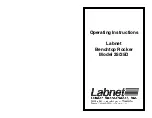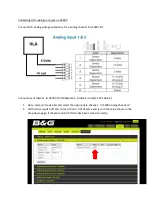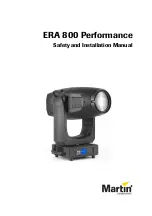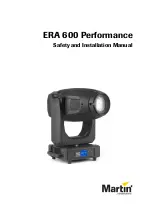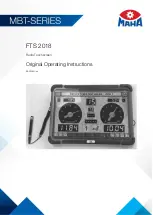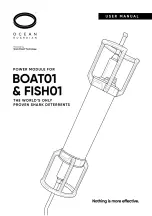
Lake Shore Model 370 AC Resistance Bridge User’s Manual
2.3.3
Adiabatic Demagnetization Refrigerator (ADR)
The principals of ADR have been known for some time and many very capable systems have been built over the years.
There has recently been growing interest in the technology and it is finding its way into many new applications. The
Model 370 has many features that can help automate and control these systems in temperature ranges where leaded
resistance measurement is practical. Figure 2-3 illustrates a typical first stage of an ADR but other stages can be added.
Helium Dewar: Vacuum insulated Dewar large
enough to contain the following
components. Sometimes
includes a nitrogen outer jacket
to improve efficiency. Contains
superconducting magnet if the
first magnetic cooling stage has
a large mass.
4
He Reservoir: Reservoir of liquid
4
He at
atmospheric pressure that
provides bulk cooling down to
4.2 K. Pre-cools leads entering
the vacuum space and acts as a
radiation shield for refrigeration
components.
Vacuum Space: Insulates refrigeration
components and provides a
clear workspace.
Pre-Cooling Stage: Brings the system to a low
enough temperature for
magnetic cooling to become
practical. Also acts as a heat
sink for the first magnetic
cooling stage. This can be a
cryogenic refrigerator,
4
He bath,
pumped
4
He cryostat or pumped
3
He cryostat.
Good location for
a temperature sensor for cool
down monitoring and
troubleshooting
.
Heat Switch:
Allows thermal contact between
the pre-cooling stage and salt
pill during magnetization then
provides thermal isolation during demagnetization (cooling). The construction of the switch varies
depending on temperature but could be superconducting, exchange gas (gas-gap) or mechanical
.
Several types of heat switches can be controlled by the still heater or analog output.
Helium
Dewar
Vacuum
Insulation
4
He
Reservoir
(1 K)
Precooled
Mass
(or Previous Stage)
Vacuum
Space
Heat
Switch
Salt Pill
Super-
conducting
Magnet
Sample
Holder
ADR_Block.eps
Figure 2-3. Single-Stage ADR Block Diagram
Superconducting Magnet: Magnetizes the salt pill while in thermal contact with the pre-cooling stage then demagnetizes
it when thermally isolated.
The magnet power supply can be programmed by the analog output and
controlled via computer interface.
Salt Pill:
Mass of paramagnetic salt that acts as the refrigerant. It is magnetized while in thermal contact with the
pre-cooling stage so the heat of magnetization is removed and entropy is reduced. Then it is
demagnetized while thermally isolated and as field is decreased the salt must decrease in temperature
to maintain constant entropy.
Best location for temperature control sensor. The heater output can
control temperature by trimming current in the magnet with its heater output current source. Resistive
heating is not desirable.
Load (Sample Holder): End of the final cooling stage where experiments can take place.
Requires a separate
temperature sensor if its temperature is different from the final stage.
2-4
Theory of Operation































